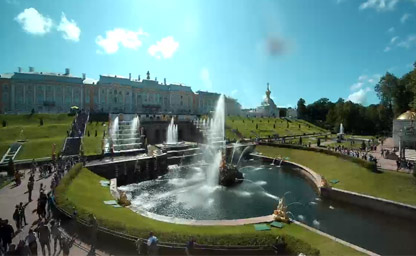
St. Petersburg
Watch the Grand Peterhof Cascade

Watch the Grand Peterhof Cascade
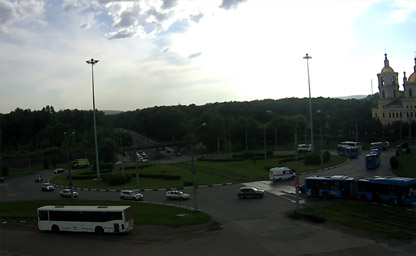
An industrial city and the administrative center of Kemerovo Oblast
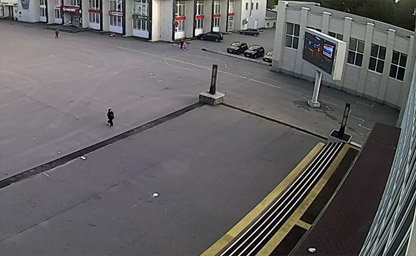
Situated on the Lake Imandra, Niva River, and Lake Pinozero
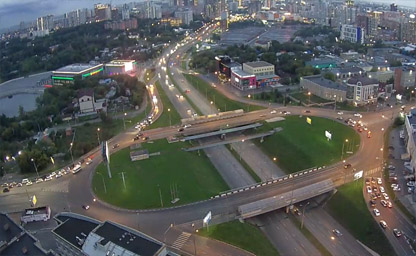
Bisected by the Ob River
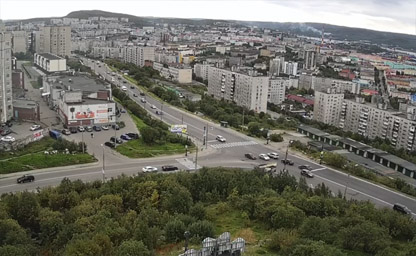
Located at the end of a deep bay off the Barents Sea
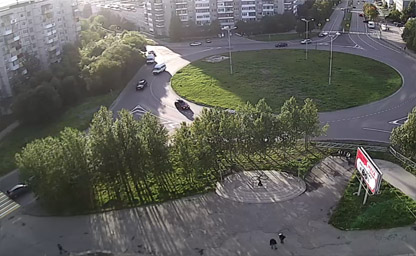
The largest scientific centre of Kola Peninsula
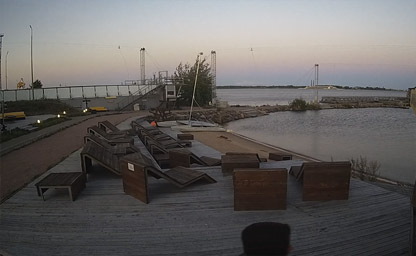
One of the most significant fortification of Kronshtadt fortress
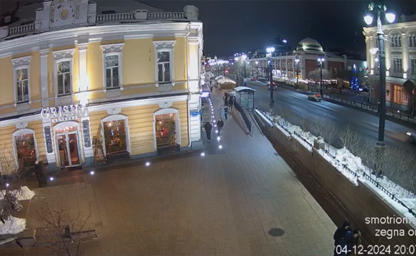
View of Lubinsky Avenue, the main street of the city
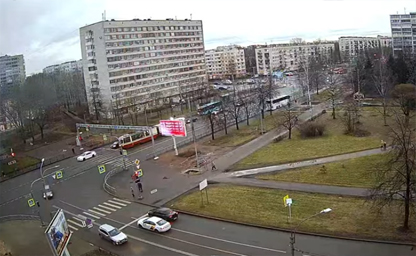
A major artery in Kalininsky District, situated north of the Neva River
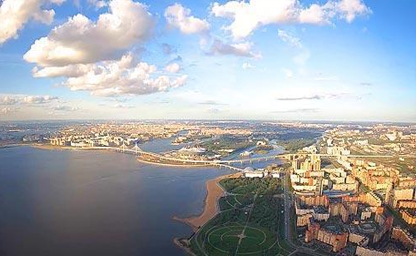
The 87-story Lakhta Center tower overlooks the Gazprom Arena stadium and the high-speed Cable-stayed bridge
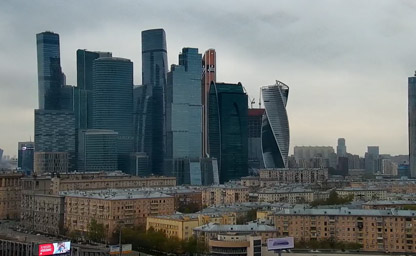
Situated near from Gorky Park Museum and Simonov Monastery
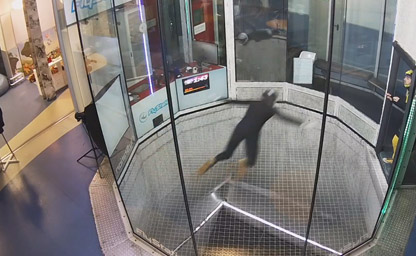
Live video stream from FlyStation wind tunnel
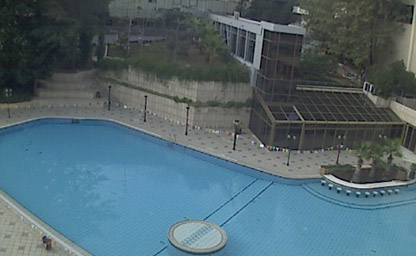
View video from the outdoor pool in real time

Live twenty-four hours a day, seven days a week
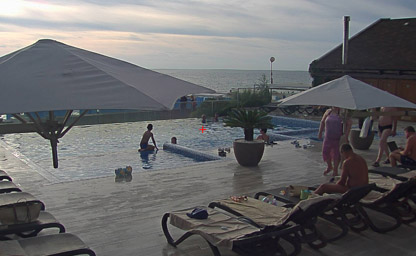
Adler is a picturesque sunny corner of the Black Sea coast
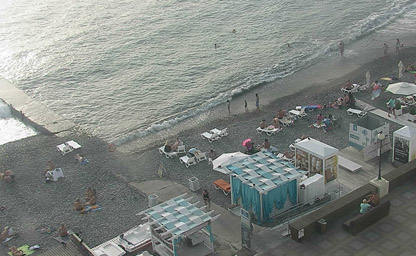
Hotels in Adler are rightfully considered the best vacation option in Sochi
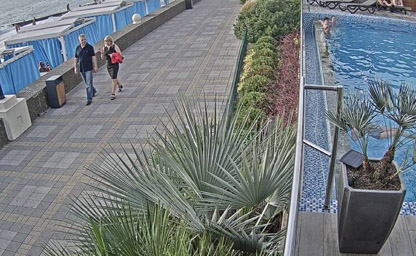
Guests of the Adler resort will enjoy pleasant, warm weather and the gentle Black Sea
Embark on a virtual odyssey to Russia, the largest country on Earth, where rich history, cultural diversity, and natural beauty converge. Immerse yourself in the vast landscapes and vibrant cities through the lens of webcams, providing real-time glimpses into the heart of Russia's iconic landmarks, historical sites, and architectural wonders.
Our digital exploration begins in St. Petersburg, where webcams offer live views of the city's imperial charm. Immerse yourself in the opulence of the Hermitage Museum, the grandeur of the Winter Palace, and the picturesque beauty of the Neva River.
The live feeds become a virtual tour through the city's cultural richness, capturing the essence of St. Petersburg's artistic heritage and architectural marvels. Let the digital lens guide you through the imperial charm of a city steeped in history.
Shift our gaze to Moscow, where webcams provide real-time glimpses of the iconic Red Square. Explore the heart of the Russian capital, where the digital lens captures the splendor of the Kremlin, the beauty of St. Basil's Cathedral, and the historical significance of Lenin's Mausoleum.
The live feeds offer a virtual stroll through a cultural epicenter, showcasing the blend of tradition and modernity that defines Moscow. Let the digital lens transport you to Red Square, a place where Russia's past and present harmonize.
Continue our digital journey to the vast landscapes traversed by the Trans-Siberian Railway. Webcams offer views of this legendary route, capturing the ever-changing scenery as the train journeys from Moscow to Vladivostok.
The live feeds become a virtual adventure through the Siberian wilderness, showcasing the immensity of Russia's natural beauty. Let the digital lens guide you through a mesmerizing journey across landscapes that span from mountains to forests to endless plains.
Our virtual exploration takes us to rural Russia, where webcams offer views of serene countryside landscapes. Immerse yourself in the simplicity and beauty of traditional villages, capturing the essence of rural life.
The live feeds provide a virtual escape to the tranquility of vast fields, meandering rivers, and charming wooden houses. Let the digital lens be your window to the rustic charm that defines the soul of rural Russia.
As our digital journey concludes, webcams in the Golden Ring cities showcase timeless architectural treasures. Explore Suzdal, Yaroslavl, and Sergiev Posad, where the digital lens captures the beauty of ancient churches, wooden structures, and cobblestone streets.
The live feeds become a virtual exploration of Russia's cultural heritage, showcasing the preserved beauty of historical towns. Let the digital lens guide you through the Golden Ring, where every building tells a story of Russia's rich past.
As our digital journey through Russia concludes, the webcams have unfolded a visual symphony of imperial charm, cultural epicenters, vast landscapes, serene countryside, and timeless architectural treasures. Whether exploring St. Petersburg and Moscow, experiencing the Trans-Siberian Railway, delving into rural life, or marveling at the Golden Ring, Russia's beauty comes alive through every pixel on your screen.
Let this virtual odyssey be an invitation to delve deeper into the wonders that Russia generously shares with the world. The digital lens, although a substitute for being there in person, allows us to appreciate and celebrate the raw, authentic essence of Russia's landscapes and cultural heritage.
Russia’s history is a monumental saga of empire, revolution, art, and cultural transformation that stretches back over a thousand years. The narrative begins with the East Slavic tribes who settled the vast plains of Eastern Europe and laid the foundation for what would become Kievan Rus’, a medieval federation that emerged in the 9th century. This early state, centered around the city of Kiev, was instrumental in spreading Christianity throughout the region after the baptism of Prince Vladimir in 988, an event that deeply influenced Russian culture and identity for centuries to come.
Following the decline of Kievan Rus’ due to internal strife and the devastating Mongol invasion in the 13th century, the stage was set for the rise of the Grand Duchy of Moscow. Moscow’s ascendancy was marked by a series of strategic alliances and military campaigns that enabled it to gradually eclipse other regional powers. Under the leadership of visionary princes such as Ivan III (Ivan the Great), Moscow not only liberated itself from Mongol domination but also began to assert its authority over the surrounding territories, laying the groundwork for the expansive Russian state.
The reign of Ivan IV, known as Ivan the Terrible, in the mid-16th century heralded the transformation of Russia into a formidable centralized autocracy. His complex legacy is reflected in both the cultural advancements and the brutal methods he employed to consolidate power. The period of Tsarist Russia saw the expansion of its borders, reaching from Eastern Europe deep into Siberia, as intrepid explorers and military forces pushed the frontiers of the empire. This era of exploration, marked by figures such as Yermak Timofeyevich, not only extended the physical boundaries of Russia but also enriched its cultural mosaic through encounters with diverse indigenous peoples.
The 17th century brought both turmoil and transformation. The Time of Troubles, a period of political chaos and foreign intervention, tested the resilience of the Russian people. However, the eventual ascension of the Romanov dynasty in 1613 ushered in a new era of stability and growth. Over the subsequent centuries, Russia evolved into one of the world’s largest empires, distinguished by its cultural achievements, military prowess, and unique blend of Eastern and Western influences.
The 18th century, under the rule of Peter the Great, marked a decisive turning point in Russian history. Peter’s sweeping reforms modernized the Russian state, reformed its military, and established St. Petersburg as a "window to the West." His relentless drive for modernization was not merely about adopting Western technology and customs; it was also about redefining Russia’s identity as a global power. Peter’s legacy is still evident today in the grand architectural style of St. Petersburg and the continued emphasis on innovation and progress in Russian society.
The 19th century witnessed the flowering of Russian culture with luminaries such as Tolstoy, Dostoevsky, Tchaikovsky, and Chekhov, whose works have left an indelible mark on world literature, music, and theater. At the same time, the rigidity of the Tsarist regime and the stark inequalities within society sowed the seeds of discontent. These tensions ultimately culminated in the Russian Revolution of 1917, a seismic event that not only overthrew the centuries-old monarchy but also gave rise to the world’s first socialist state.
The subsequent establishment of the Soviet Union under Lenin and later under Stalin transformed the face of Russia and reshaped global politics. The Soviet era was marked by rapid industrialization, significant scientific achievements, and profound social changes, alongside periods of intense repression, political purges, and widespread hardship. The USSR emerged as a superpower, engaging in a protracted ideological and geopolitical struggle with the United States during the Cold War. This period produced remarkable feats such as the launch of Sputnik, the first artificial satellite, and Yuri Gagarin’s historic orbit around the Earth, milestones that continue to be celebrated in Russian history.
The dissolution of the Soviet Union in 1991 ushered in a new chapter for Russia, characterized by the challenges of transitioning to a market economy, redefining its national identity, and re-establishing its role on the global stage. Despite economic and political upheavals, modern Russia has retained a deep sense of pride in its cultural and historical legacy, which is evident in its world-renowned art, literature, and architecture. The tumultuous journey from a medieval state to a global superpower is a testament to the resilience and adaptability of the Russian people, whose history is filled with both dramatic triumphs and profound tragedies.
Today, Russia is a mosaic of traditions, modernity, and enduring historical legacy. Its vast territory is dotted with cities that are living museums—Moscow with its iconic Red Square and Kremlin, St. Petersburg with its elegant canals and imperial palaces, and countless regional centers that preserve local folklore and customs. Russian history remains a source of national pride and a compelling narrative that continues to fascinate scholars, travelers, and enthusiasts from around the world. It is this profound, layered past that makes Russia one of the most intriguing destinations for those seeking to explore the depths of human civilization and the enduring spirit of a nation.
Russia’s climate is as vast and varied as its expansive territory, ranging from the frigid, subarctic conditions of Siberia to the temperate, humid climate found in parts of European Russia. Due to its enormous size—the largest country in the world—Russia experiences a wide array of weather conditions that can change dramatically from one region to another. This climatic diversity is one of the key attractions for travelers interested in natural phenomena and outdoor adventures.
The western part of Russia, including cities like Moscow and St. Petersburg, generally enjoys a humid continental climate. Winters in these areas are long, cold, and often snowy, with temperatures frequently plunging below -10°C (14°F) and sometimes even reaching -30°C (-22°F) during particularly harsh spells. The snow-covered landscapes and icy rivers create a mesmerizing winter wonderland, offering opportunities for winter sports, ice skating, and festive celebrations that attract tourists from across the globe.
Summers in European Russia are relatively short but can be pleasantly warm, with average temperatures ranging from 20°C to 25°C (68°F to 77°F). These milder months provide ideal conditions for exploring the historic cities, enjoying outdoor festivals, and cruising along the scenic rivers and canals. The interplay of sunlit days and cool nights, particularly in St. Petersburg with its famed “White Nights,” offers a unique experience that is both enchanting and culturally rich.
In contrast, the climate in Siberia is among the most extreme in the world. Winters are notoriously brutal, with temperatures in some regions dropping as low as -50°C (-58°F), accompanied by strong winds and heavy snowfall. These harsh conditions create a stark, otherworldly landscape where nature’s resilience is on full display. Despite the severe cold, Siberia’s summer season, although brief, brings a burst of life and color as the tundra transforms into a vibrant expanse of wildflowers and green forests. The dramatic seasonal variations in Siberia have become a subject of fascination for climatologists, adventure travelers, and photographers alike.
The Russian Far East, which includes regions like Vladivostok, experiences a mix of maritime and continental climates. Here, the influence of the Pacific Ocean moderates temperatures somewhat, resulting in milder winters and cooler summers compared to the interior. This region’s climate supports rich biodiversity and is known for its dramatic coastal landscapes, rugged mountains, and dense forests, making it an appealing destination for eco-tourism and outdoor activities.
Due to its diverse climate zones, Russia offers a plethora of seasonal activities that cater to every interest. Winter enthusiasts can explore the snowy expanses of the Taiga, participate in ice festivals, or enjoy the thrill of dog sledding, while summer visitors can indulge in hiking, boating, and cultural tours amidst the lush, vibrant scenery. The varied weather patterns also play a significant role in shaping Russia’s culinary traditions, festivals, and daily life, making climate an integral part of the overall travel experience.
Moreover, the distinct climate regions of Russia have spurred the development of unique architectural styles and urban planning strategies. For instance, the wooden structures found in the rural regions of northern Russia are designed to withstand the heavy snowfall and freezing temperatures, while the grand, opulent palaces and cathedrals of Moscow and St. Petersburg reflect the ambition of their builders to create enduring monuments against the backdrop of harsh winters. The seasonal extremes, from the frozen depths of Siberian winter to the luminous, almost surreal nights of the White Nights, continue to capture the imagination of travelers and scholars, making Russia a land of endless contrasts and captivating beauty.
Russia’s geography is a vast and awe-inspiring canvas that spans eleven time zones and encompasses a stunning array of natural features. From the majestic Ural Mountains, which serve as a traditional boundary between Europe and Asia, to the sprawling Siberian plains and dense taiga forests, Russia’s diverse landscapes offer a unique blend of natural wonders and historical landmarks that have captivated explorers, scientists, and travelers for centuries.
The European part of Russia, which includes major cities such as Moscow, St. Petersburg, and Kazan, is characterized by fertile plains, rolling hills, and numerous rivers and lakes that have historically facilitated trade, agriculture, and cultural exchange. The Volga River, Europe’s longest river, flows gracefully through the heart of Russia and is a lifeline for the regions it traverses. Its banks are dotted with ancient towns, vibrant markets, and cultural treasures that reflect the rich heritage of the Russian people. This region’s geography has not only supported economic development but also inspired countless works of art and literature, underscoring the deep connection between the land and its inhabitants.
In stark contrast, Siberia presents an expansive wilderness where the landscape seems almost untouched by modern civilization. Vast taiga forests, rugged mountain ranges, and endless steppes dominate this region, creating an environment of raw, untamed beauty. The mighty Lena, Yenisei, and Ob rivers carve their way through these remote territories, providing vital water sources and serving as the arteries of a land that is as mysterious as it is magnificent. The pristine wilderness of Siberia attracts adventure seekers, nature enthusiasts, and those eager to experience the profound tranquility of an environment where nature reigns supreme.
The Ural Mountains, a formidable range that stretches from the Arctic Ocean to the Ural River, form a natural divider between Europe and Asia. These mountains are rich in mineral resources and have historically been a crucial center for mining and industrial activity. Their rugged peaks, dense forests, and mineral-rich soils continue to be a significant factor in Russia’s economic and industrial landscape. The Urals also hold a special place in Russian folklore and culture, symbolizing the boundary between two worlds and the enduring spirit of exploration.
The Russian Far East is yet another region of remarkable geographical diversity. This area, bordering the Pacific Ocean, features a dramatic coastline, volcanic islands, and rugged mountain ranges that provide breathtaking views and fertile grounds for biodiversity. Vladivostok, a major port city in this region, stands as a gateway to the Pacific and reflects the fusion of Russian heritage with the dynamic influences of East Asia. The region’s proximity to the ocean has fostered a unique maritime culture, evident in its fishing traditions, coastal cuisine, and vibrant seascapes that captivate visitors year-round.
In addition to its diverse terrestrial landscapes, Russia is home to an abundance of lakes, wetlands, and marshes that add to its ecological richness. The unique ecosystems of the Volga Delta, Lake Baikal—the deepest and one of the oldest freshwater lakes in the world—and the pristine wilderness of the Arctic tundra provide critical habitats for countless species of flora and fauna. These natural treasures are not only of immense ecological value but also serve as popular destinations for eco-tourism, scientific research, and adventure travel.
The interplay between Russia’s expansive geography and its historical development is a story of resilience, adaptation, and innovation. The natural barriers and vast distances that once isolated communities have, over time, fostered a deep sense of regional identity and pride. Whether traversing the bustling urban landscapes of Moscow, exploring the historic palaces of St. Petersburg, or venturing into the remote, untamed wilderness of Siberia, visitors are constantly reminded of the enduring relationship between the Russian people and their land.
Modern Russia has embraced its geographical diversity as a source of national pride and a catalyst for economic development, cultural expression, and tourism. The rich tapestry of landscapes—from the frozen expanses of the Arctic to the temperate plains of European Russia—continues to inspire artistic expression, scientific inquiry, and adventurous exploration. For travelers, Russia offers an unparalleled opportunity to witness a country where every region tells its own story, shaped by millennia of natural evolution and human endeavor.
Travel Tip: For a truly immersive Russian experience, consider a multi-leg journey that begins in the cultural heart of Moscow with its iconic Red Square and Kremlin, continues with a scenic train ride to St. Petersburg to explore its world-renowned museums and palaces, and culminates in an adventurous expedition to the remote wilderness of Siberia or the Ural Mountains. This comprehensive itinerary offers an exceptional blend of history, culture, and natural beauty that captures the essence of Russia.
Interesting Fact: Russia is home to Lake Baikal in Siberia, which not only holds the title of the deepest lake in the world but also contains approximately 20% of the world's unfrozen freshwater, making it a true natural wonder and a vital resource for both the region and scientific research worldwide.